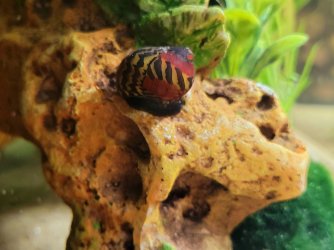The little rapidly proliferating "pest" snails actually rarely eat living plants, and can sometimes even reduce total poop load if there is lots of it around.
While many people claim they have seen pest snails like bladder snails, pond snails, and Malaysian Trumpet snails eat living plants I have only ever seen them eat dead plant matter or the "melting" part of living plants -- i.e. they are actually helping you. Often one can get thrown off when an otherwise perfectly healthy plant starts melting a few leaves and the pest snails descend upon said leaves and consume them outright as their myriad numbers writhe all over them. The pest snails have ways of figuring out those plant leaves are either dying or melting long before its visibly obvious, but I assure you if you were to clear them away from the leaves they are consuming you will find that leaf dead, melted, or otherwise visibly ill for other reasons before too long. The only living, healthy, vascular plant material I have ever seen pest snails eat is
water meal, which is so small they might be mistaking it for algae. Meanwhile
*BIG* (non-"pest") snails however can go after living plants. I think mystery snails are about the cut-off, once you get a snail bigger than a mystery snail you have something that
*WILL* eat plants albeit sometimes only very specific types of plants. Even mystery snails if left to starve may start eating some plants.
As for the poo, yes if they are eating leftovers (or dying plant matter) that no one else is they will add to the poo-load, but increasing the poo-load in such situations is usually less bad then leaving rotting food-stuffs around so that is still a net-positive (though not the ideal solution to the problem in any way, but it buys you a little time for a better solution.) At the same time pest snails happily eat other critters poo and produce less solid poo in the process (again, mass-balance for the lost poo-mass in said process is the conversion of some of the original poo into CO2, NH4, water born minerals, etc...)
I have always seen reputable suppliers refer to nerites as "nerites" though usually with a qualifier like "red racer nerite" or "zebra nerite" depending on their exact species and patterning. Just be sure you are buying freshwater nerites, as brackish and saltwater nerites are also a thing that are popularly offered in many pet stores.


